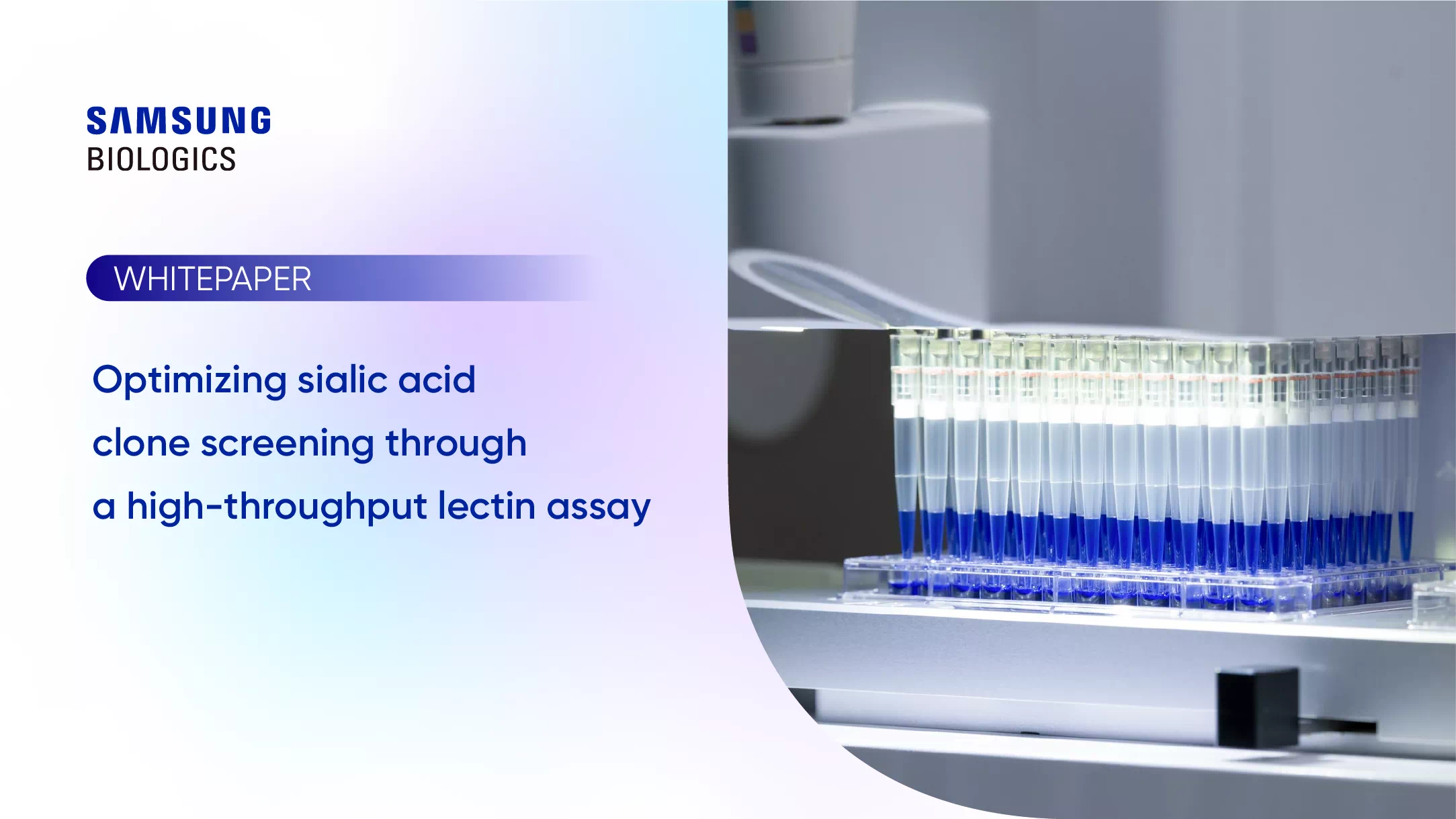Optimizing sialic acid clone screening through a high throughput lectin assay

As glycosylation can significantly impact protein stability, folding, and solubility during early development, establishing a robust glycosylation control strategy is critical to ensure success.
In this whitepaper, we discuss how the implementation of high-throughput lectin assay can lower immunogenicity and optimize pharmacokinetics and pharmacodynamics for recombinant antibody therapeutics.
Glycosylation has emerged as a critical quality attribute (CQA) for many therapeutics on the market or in development today. Sialylation, the covalent addition of sialic acid to the terminal glycans of glycoproteins and glycolipids, is a particularly significant glycosylation modification – many of the glycan structures on antibodies are capped by sialic acid, for example. The terminal monosaccharide of N-linked complex glycans is typically occupied by sialic acid, which affects absorption and clearance from the serum, as well as the physical, chemical, and immunogenic properties of the respective glycoprotein. From a manufacturing perspective, controlling the degree of sialylation for a product is crucial, as it has an outsized impact on the quality and stability of therapeutic glycoproteins.
Optimizing a glycosylation strategy for antibody therapeutics
While the traditional high-performance analytical methods used to evaluate glycosylation offer operators high accuracy, their throughput limitations can create time and cost constraints that may hinder development. Additionally, these methods can typically only be utilized during the later stages of cell line screening and require high concentrations of purified protein. Conversely, many existing high-throughput methods for quantifying sialic acids possess their own limitations, as these approaches often offer low accuracy or specificity when compared to high-performance methods.
To overcome these challenges, Samsung Biologics’ Cell Line Development Group has implemented a novel high-throughput screening method for analyzing a molecule’s sialic acid profile by measuring its binding affinity with lectin. For this assay, lectins, sugar-binding proteins highly specific to their associated sugar moieties, are leveraged to improve specificity. The result is an easy-to-use protocol that requires lower sample concentrations without the need for purification, and which can screen large pools of clones faster and more efficiently than incumbent methods.

As glycosylation can significantly impact protein stability, folding, and solubility during early development, establishing a robust glycosylation control strategy is critical to ensure success.
In this whitepaper, we discuss how the implementation of high-throughput lectin assay can lower immunogenicity and optimize pharmacokinetics and pharmacodynamics for recombinant antibody therapeutics.
Glycosylation has emerged as a critical quality attribute (CQA) for many therapeutics on the market or in development today. Sialylation, the covalent addition of sialic acid to the terminal glycans of glycoproteins and glycolipids, is a particularly significant glycosylation modification – many of the glycan structures on antibodies are capped by sialic acid, for example. The terminal monosaccharide of N-linked complex glycans is typically occupied by sialic acid, which affects absorption and clearance from the serum, as well as the physical, chemical, and immunogenic properties of the respective glycoprotein. From a manufacturing perspective, controlling the degree of sialylation for a product is crucial, as it has an outsized impact on the quality and stability of therapeutic glycoproteins.
Optimizing a glycosylation strategy for antibody therapeutics
While the traditional high-performance analytical methods used to evaluate glycosylation offer operators high accuracy, their throughput limitations can create time and cost constraints that may hinder development. Additionally, these methods can typically only be utilized during the later stages of cell line screening and require high concentrations of purified protein. Conversely, many existing high-throughput methods for quantifying sialic acids possess their own limitations, as these approaches often offer low accuracy or specificity when compared to high-performance methods.
To overcome these challenges, Samsung Biologics’ Cell Line Development Group has implemented a novel high-throughput screening method for analyzing a molecule’s sialic acid profile by measuring its binding affinity with lectin. For this assay, lectins, sugar-binding proteins highly specific to their associated sugar moieties, are leveraged to improve specificity. The result is an easy-to-use protocol that requires lower sample concentrations without the need for purification, and which can screen large pools of clones faster and more efficiently than incumbent methods.
Related Content